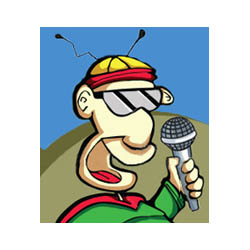One of the more common phone calls I’ve been receiving lately is from people looking for advice on which frequency bands to choose for their new wireless systems.
Maybe it’s all of the tours going out, or maybe people are finally getting the message about the spectrum changes and they want to “do the right thing”.
I’ve certainly noticed that quite a few systems proliferating the market in the last 10 years fall within the “700 MHz band” (between 698-806 MHz). I’d say that for many manufacturers, close to a third of what they’ve sold has been in this part of the spectrum. Sennheiser Evolution “C” range, Lectrosonics blocks 28 and 29, Audio Technica “E” range, for instance, all fall within the 700 MHz band. Some manufacturers have offered nothing but products in this range.
So here’s how these kinds of calls usually go:
Sound Guy: “So, we’re gearing up for our tour, and we already have vocal systems from Shure on J5, IEMs from Sennheiser in their B range, and a few other backline systems on a variety of ranges. We need to get some additional vocal wireless channels. What frequency band should we be looking at?”
Mike Wireless: “Well, you’ll need to squeeze in between what you already have since you’re covering everything from 518 to 650 MHz. Most manufacturers don’t offer much below 518 MHz. And some of the bands starting at 470 MHz can be problematic in large metro areas due to the public safety bands in that range.”
Sound Guy: “Wow, so what are we going to do?”
Mike Wireless: “You might want to consider consolidating all the backline stuff into one frequency band, and then look at something in the 490-518 range, then maybe something in the 650-698 range. That’s about all that’s left.”
SoundGuy: “OK, we’ll start there.”
Here’s the bottom line: with the analog TV stations still broadcasting, and DTV transmissions starting up or moving down below 700 MHz, the available UHF spectrum is more crowded than it’s ever been. Is there a light at the end of the tunnel? Maybe.
Come June 12, full-power analog TV broadcasts should cease, thus opening up some of the spectrum between 470 to 698 MHz.
Will it be like the heady days of the 1990s? Certainly not, because DTV signals take up a full 6 MHz where analog TV signals did not. And there are more channels overall now than there were 10 years ago.
But the good news is that things should lighten up a bit, and logically, we shouldn’t expect a whole slew of DTV channels to be added any time soon. The summer touring season should get a break, then.
That is, until the TVBD (TV Band Devices) start showing up. It’s difficult to predict how those might impact our use of wireless mics, but the main problem is that the signals will be transient rather than steady, so we may have to employ different techniques for scanning and coordinating wireless microphone frequencies.
Signing off for now…
Mike Wireless
Mike Wireless is the nom de plume of a long-time RF geek devoted to better entertainment wireless system practices the world over.
Previous posts by Mike Wireless:
Change The Only Constant In Marketplace For Wireless Spectrum















